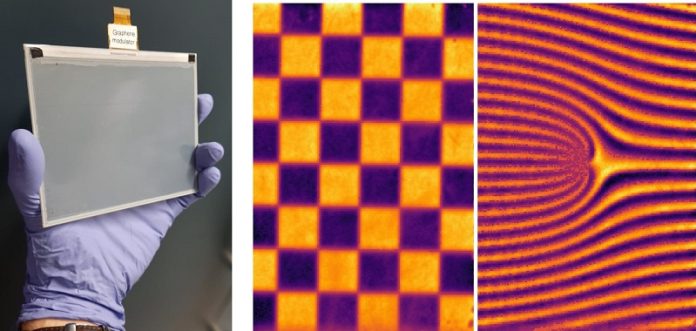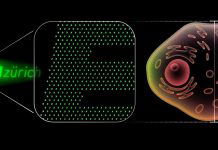
Researchers at The University of Manchester have developed a new technology that could lead to faster 6G wireless networks and better imaging tools that can “see” through objects.
This innovation uses a special material called graphene to build a smart surface that can control light waves in a very advanced way.
The team’s invention is a programmable surface made of over 300,000 tiny pixels—much smaller than the width of a hair—that can shape and control terahertz (THz) and millimeter (mm) waves.
These types of light waves are useful for ultra-fast wireless communication and safe, non-invasive scanning in places like airports or hospitals.
What makes this breakthrough special is how it combines graphene, known for being super thin and conductive, with display technology similar to what’s used in TVs and monitors.
This allows the surface to control the light in real time, across a large area, which was not possible before.
Professor Coskun Kocabas, who led the project, said: “We’ve found a new way to control terahertz waves at speeds and scales never seen before.
This could change the future of wireless networks and imaging systems.”
Some of the amazing things the device can do include:
- Changing the direction of THz beams (like steering a flashlight),
- Creating holograms with different shades (grayscale),
- Shaping beams into donut-like patterns for advanced data transmission, and
- Building a single-pixel THz camera that can image hidden metallic objects.
The secret behind the device is how it controls the electric charge in a single sheet of graphene without cutting or patterning it. This makes the surface easier to produce using current technology.
Dr. M. Said Ergoktas, a co-author now at the University of Bath, explained, “Because we don’t need to shape the graphene itself, we can build these surfaces using regular display manufacturing tools.”
The team hopes to make the system even faster and extend it to reflect THz waves, which could lead to full spectroscopic imaging. In the future, this platform could be combined with beamforming tools to bring high-speed 6G wireless and advanced security imaging into everyday use.
In simple terms, this research shows that the future of faster internet and safe, powerful imaging could start with a sheet of graphene.



